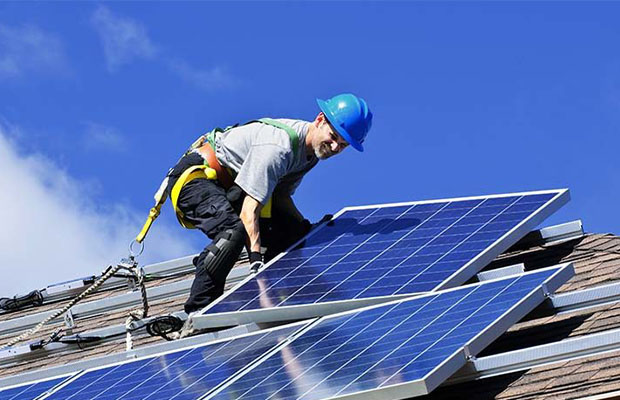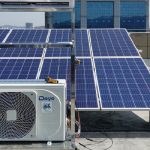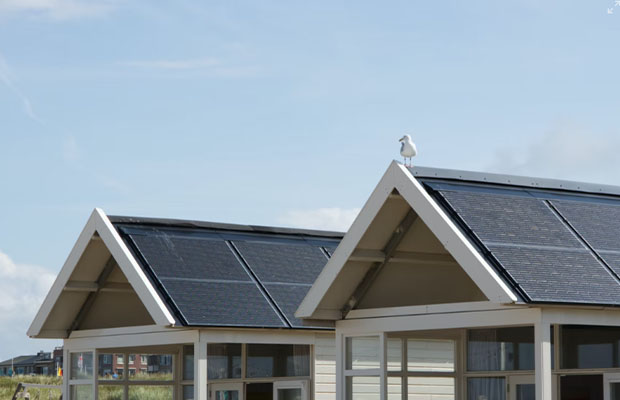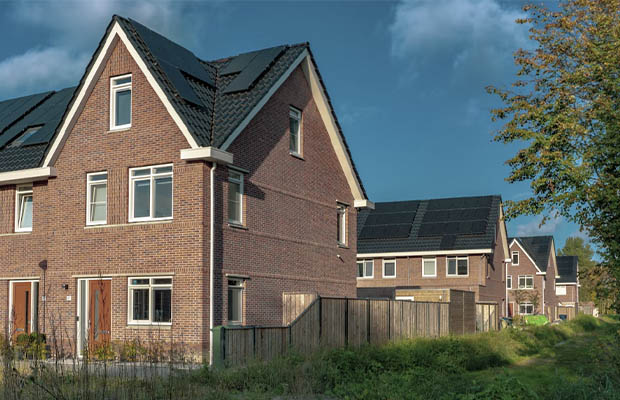The continuous rise in energy billing costs and the carbon footprint that most traditional power sources leave behind as fallout residues are the most relevant reasons why people are turning to renewable energy sources, such as solar panels. Solar panel repair and maintenance are also important things.
Most businesses and homeowners don’t consider solar panel repair to be a priority.
It will be beneficial for you to continue reading our comprehensive guide to fixing solar panels.
Table of Contents
Common Problems Of Solar Panel
Micro-cracks And Hot Spots
On the surface of solar panel glass cells, microscopic fractures, hot spots, and cracks may appear; as they enlarge over time, they may reduce the efficiency of solar cells. Despite the cracks, the solar system’s waterproofing, panel frame, and lamination may still be in good shape.
Pid Effect
PID, or potential induced degradation, is caused by voltage fluctuations between the voltage produced by the solar panel and its earthing. This causes the main power circuit’s discharged voltage to vary in percentage. To stop solar panels from aging more quickly and stabilize their performance, the problem can be fixed by experts in solar panel repair.
Loose Wiring
As a result of loose wires in the solar power system, unexpected power generation problems may occur. The smallest wiring error could result in failed connections because these wires link individual PV cells to the inverters and home solar batteries. Meters and other wire performance-checking tools are used by installers with experience in maintaining and repairing solar panels to diagnose such issues and offer timely assistance.
Inner Module Damage
Solar panels may sustain internal damage as a result of poor production or component selection. Snail trails, delamination, discoloration of solar connectors or cells, fading of the back-facing sheets, browning of EVA films, staining of the PV cells, unintended inclusions in the PV laminates, burning out of the back and/or front of the solar modules, etc. are the results of these factors.
Module Damages Caused By External Factors
Solar modules can sustain significant damage from storms, hail, snow pressure, lightning, and other weather-related factors. Fire, animal bites, broken branches, icy conditions, and extreme heat or cold can also cause external damage. These elements cause microcracks, cell breakage, scratches on the module frame, and other damage such as broken solar panel glass. conditions of prolonged and intense cold.
Can Damaged Solar Panels Be Repaired?
The short answer is “yes.” The repair of a variety of PV components, including damaged modules, is a specialty of some solar appliance repair businesses. However, there are a few things to keep in mind:
- You’ll still need to find a technician to help with these steps since solar appliance repair companies don’t always offer removal or re-installation services.
- Most broken panels go off-site for repairs. Due to the way that older PV systems are constructed, one missing module could significantly impair the performance of your installation if you have a string inverter.
- The warranty from the original manufacturer might be void if you send your modules to a different vendor. However, the repairman for the solar panel may be able to offer you a newer, albeit shorter, warranty.
The temptation to leave a cracked panel in place is strong. After all, it can probably still generate some power. However, if water gets into the cracks from exposure to the elements, it could result in power outages or even worse.
While these risks are removed when the module is replaced. Since the old module can be removed and a new one installed in just one visit, it also cuts down on the amount of time your system is offline. If the modules being added rely on more recent technology, installing replacement panels frequently results in a power boost.
Although it is possible to fix a damaged panel, it is not advised.

Costs Of Repairing Solar Systems
Prices vary according to the complexity of the problem and the components that need troubleshooting. Your PV system installation’s location may be important. The access, maintenance, and replacement of ground-mounted solar panels are simpler than that of rooftop modules.
But there are broad averages for the sector.
1. Solar Panel Repair Costs
The removal of solar panels can cost between $300 and $500 per module, according to the home improvement platform Modernize. If you are repairing a broken panel, the expected costs can be $200 to $1,000.
The cost for replacement panels depends on current retail market prices. Consumer Affairs advises that you set aside $200 to $250 for each module. More difficult to quantify are labor costs. However, according to EnergySage, the cost per installed watt will range from $2.40 to $3.22 when labor and hardware are added together. This entails paying between $600 and $1,288 in total for each solar panel, which typically has wattages between 250 and 400.
2. Solar Inverter Repair Costs
A new string inverter can cost between $1,200 and $2,500, and a microinverter can cost between $100 and $250, according to the contracting portal Thumbtack. However, you also need to budget an additional $250 to $500 for labor.
3. Solar Battery Repair Costs
Batteries cost between $5,000 and $7,000. But once you account for labor costs, EnergySage claims that you could easily spend twice as much.
Read More: Solar Panel Cleaning Cost
Who Is Responsible For Solar Panel Repairs?
According to the problem. For instance, the manufacturer is probably liable if the panel itself is broken. Although labor costs will probably be your responsibility, you should be eligible for a free replacement module. All of this, however, is predicated on the premise that the original manufacturer is still in operation and, as a result, able to honor the warranty.
This isn’t always the case, regrettably.
If shoddy installation workmanship is the source of the issue, one can make a good case that the installer is responsible for any repairs. This is especially true if the installer provides performance or workmanship warranties.
You might want to give it some thought before hiring that contractor again. If they performed poorly the first time, you might be preparing yourself for a further letdown. Additionally, the installer might be more motivated to repair the panel rather than replace it, keeping costs down for them.
Again, this is based on the assumption that the original installer is still operating when you need assistance. They no longer exist, which means your protection does too.
The owner of the system, you, will likely be responsible for paying for repairs and replacements in all other circumstances. However, solar panel repair is not a DIY job since you’d be working with:
- High-voltage electrical equipment (often grid-connected)
- Permitting and utility approvals that require licensed technicians
- Safety gear and harnesses (when troubleshooting rooftop systems)
Additionally, removing the hood yourself might make any remaining warranties null and void. Therefore, taking on repairs by yourself is inherently risky from a personal, legal, and financial standpoint.
Hiring a qualified solar repair technician to complete the work is a much better option.
How Can I Tell When My Solar Panels Need Maintenance?
Solar panels won’t need much extra maintenance besides routine cleaning and yearly inspections. Unless, of course, you notice any warning signs.
The most pertinent warning sign is a decrease in total energy output that cannot be identified, which indicates that your panels are not producing as much energy as they should. Make an appointment with qualified inspectors as soon as you can in this situation.
How To Maintain Your Solar Panels?
The good news is that, as long as you do it frequently and correctly, maintaining solar panels is a fairly simple task. Proper maintenance ensures your solar panels will last for decades, returning your investment several times over, plus saving you a significant amount of money. Cleaning is the most significant maintenance task.
Your PV cells typically accumulate dirt, dry leaves, muddy smudges, and other debris, particularly after a storm or during prolonged droughts. The amount of sunlight absorbed will be less than optimal and result in less electrical current generation whenever the entire surface of your solar panels is not completely clear and debris-free.
Similar to how you would approach car washing, you could approach cleaning solar panels. No abrasives, warm water, dish soap, and a fresh sponge (smooth side) or piece of clean cloth are all you need to get the job done. A squeegee might be helpful to get rid of all the extra murky water. Never forget to avoid scratching the PV cells’ surfaces.
Read More: How To Clean Solar panels?
How Often To Maintain Solar Panels?
Here are two additional types of solar panel maintenance tasks you might want to think about, along with how frequently you might complete each one.
Cleaning
In the end, cleaning frequency will depend on the topography and the climate. Typically, you can perform a thorough cleaning twice a year, or more frequently as necessary. If you live in a region with a lot of rain and your solar panels don’t accumulate a lot of debris, once a year will do. Depending on your inspections, the solution will vary.
Read More: How To Clean Solar panels?
Inspection
In this situation, an expert (typically from the business that installed the solar panels for you) will visit once a year to inspect the entire solar system to ensure that everything is operating as it should.
Others
The first two jobs fall under the category of preventive maintenance. However, you can arrange for corrective maintenance with the same experts who carry out your annual solar panel inspection if you notice anything unusual with your solar system.
Conclusion
Comparatively speaking to other alternative energy sources, solar panels demand a larger upfront investment. Long-term performance and superiority over all other options, especially if you commit to routine maintenance of your solar panels, are their only drawbacks.





